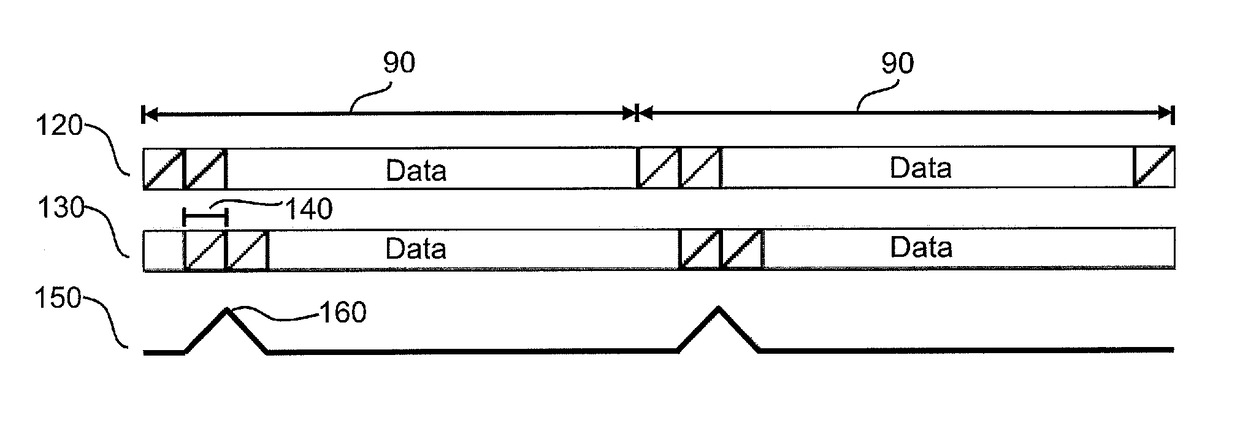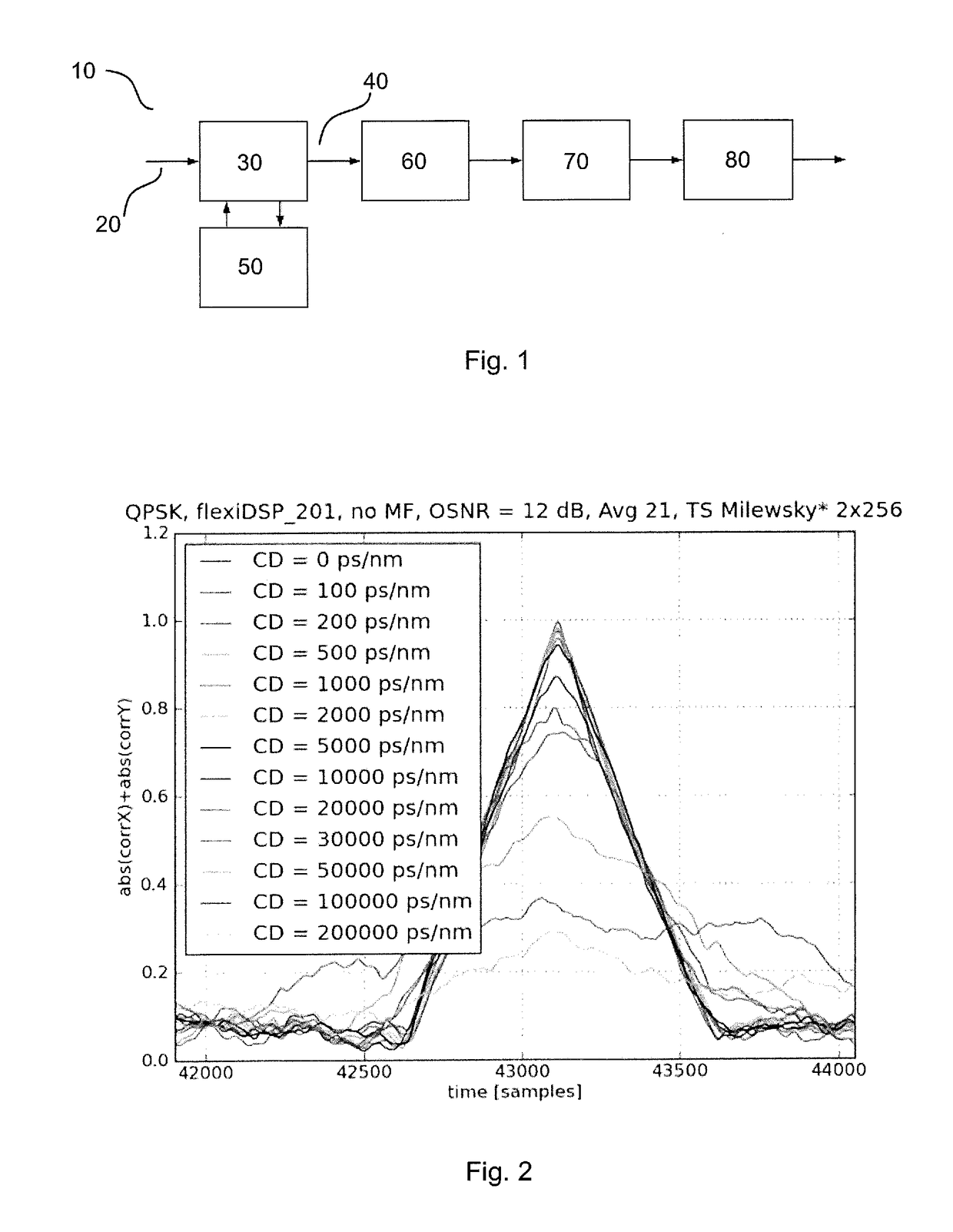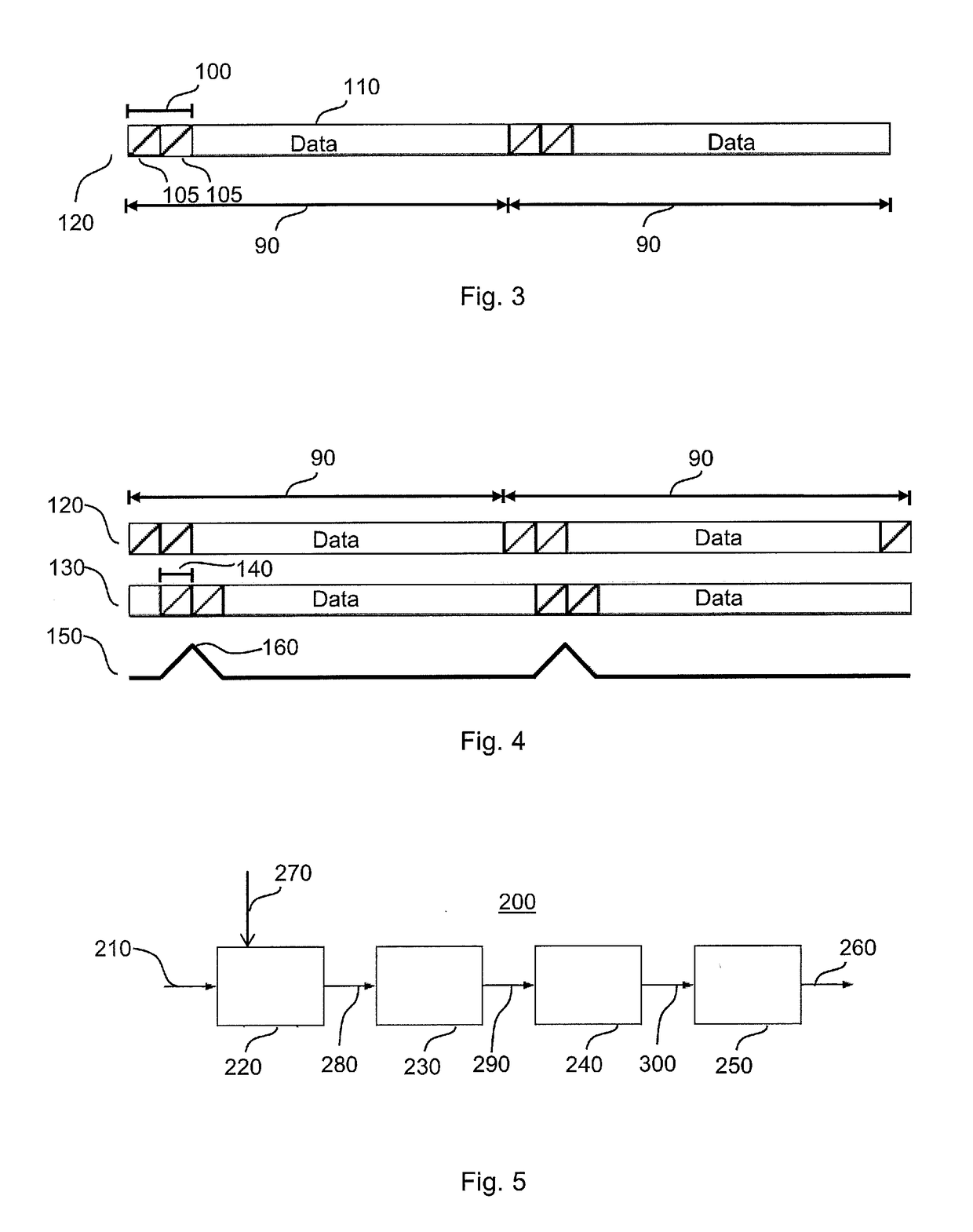Data-aided chromatic dispersion estimation
a chromatic dispersion and data technology, applied in the direction of distortion/dispersion elimination, fibre transmission, electrical equipment, etc., can solve the problems of inacceptable spectral occupancy, large-bandwidth electronics, and low spectral efficiency of the resulting optical signal
- Summary
- Abstract
- Description
- Claims
- Application Information
AI Technical Summary
Benefits of technology
Problems solved by technology
Method used
Image
Examples
Embodiment Construction
[0053]For the purposes of promoting an understanding of the principles of the invention, reference will now be made to the preferred embodiments illustrated in the drawings and specific language will be used to describe the same. It will nevertheless be understood that no limitation of the scope of the invention is thereby intended, such alterations and further modifications in the illustrated devices and method and such further applications of the principles of the invention as illustrated therein being contemplated therein as would normally occur now or in the future to one skilled in the art to which the invention relates.
[0054]The chromatic dispersion estimation according to the present invention is obtained by calculating the correlation between two identical pattern sequences of signals which have been received and equalized. In this respect, the correlation between two repetitions of a symbol pattern embedded in the transmit stream is affected by distortions, and thus also by...
PUM
 Login to View More
Login to View More Abstract
Description
Claims
Application Information
 Login to View More
Login to View More - R&D
- Intellectual Property
- Life Sciences
- Materials
- Tech Scout
- Unparalleled Data Quality
- Higher Quality Content
- 60% Fewer Hallucinations
Browse by: Latest US Patents, China's latest patents, Technical Efficacy Thesaurus, Application Domain, Technology Topic, Popular Technical Reports.
© 2025 PatSnap. All rights reserved.Legal|Privacy policy|Modern Slavery Act Transparency Statement|Sitemap|About US| Contact US: help@patsnap.com



